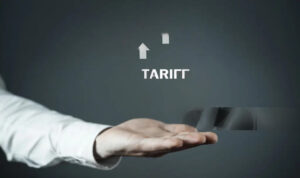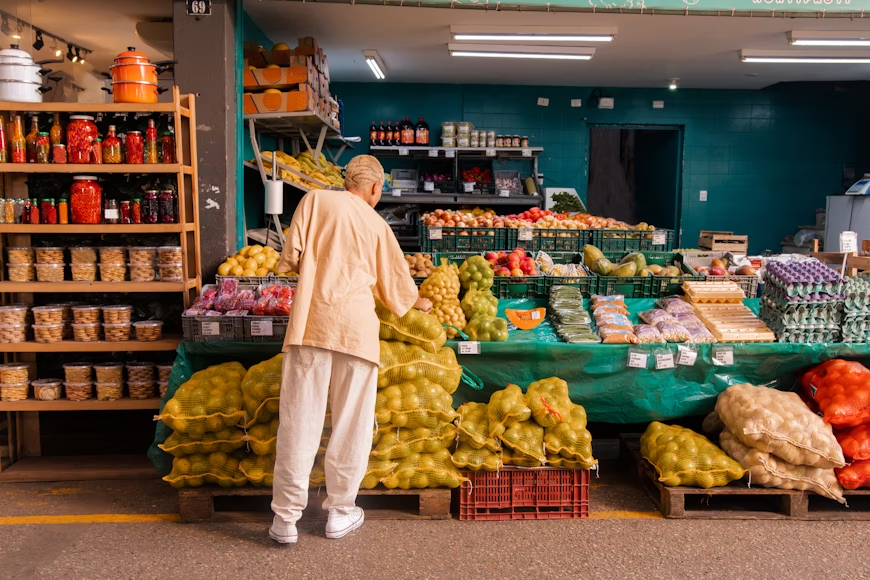Introduction: Why This Matters to Every American
President Trump’s administration has reintroduced sweeping tariffs in 2025, triggering urgent warnings from America’s top retail leaders. CEOs from Walmart, Target, Costco, and other retail giants are raising the alarm: these tariffs are causing prices to soar, inventory to shrink, and supply chains to face serious disruptions. The bottom line? American shoppers are already feeling the squeeze—and it’s only going to get worse.
The Current Tariff Landscape
- The so-called “Liberation Day” tariffs, implemented on April 2, 2025, increased the average U.S. tariff rate from about 2.5% to over 27%—the highest level since World War II.
- Imports from China faced a staggering initial tariff of 145%, later rolled back to 30% during a 90-day grace period in April.
- Tariffs of 25% were also imposed on imports from Canada and Mexico, as well as a 25% duty on certain auto imports from these countries.
- In late May, a federal court ruled these tariffs unconstitutional, but the ruling is stayed pending appeal, keeping the tariffs in effect for now.
Retail CEOs Sound the Alarm
Walmart: Price Increases “Within Weeks”
During Walmart’s May quarterly earnings call, CEO Doug McMillon confirmed that tariffs were already driving price hikes across multiple product categories—from bananas and toys to household essentials. He warned customers to expect higher prices in the near term.
A detailed New York Post report found prices for items like Jurassic World toys and office tape jumped anywhere from 25% to over 130% after the tariff hikes, though Walmart attributed some increases to regular pricing shifts.

Target: A Last Resort on Passing Costs to Customers
Target CEO Brian Cornell acknowledged the “massive potential costs” from these tariffs but vowed that raising prices for customers remains a “very last resort.” Despite this, internal documents show Target expects shortages in groceries and apparel could hit quickly if tariffs continue.
Costco: Protecting the Value Promise, But Feeling the Squeeze
Costco’s leadership is working hard to shield customers from price increases, especially on bulk essentials. However, tariffs on goods imported from China and other Asian countries are tightening margins, threatening their ability to keep prices low.
Across the Retail Sector
Other major retailers and brands—Best Buy, Macy’s, Shein, Temu, Ford, and Nike—have all confirmed consumer prices are rising due to tariff-driven cost increases. Even seasonal retailers like Cracker Barrel have delayed merchandise rollout due to supply disruptions caused by tariffs.
Who Bears the Cost?
American Households Face $3,800 in Extra Costs
A report from The Washington Post estimates that the average American household will pay about $3,800 more annually due to tariffs—through increased prices, supply chain inefficiencies, and corporate cost-cutting.

Inflation and Consumer Sentiment
- A June 2025 survey showed that consumer inflation expectations hit 6.6%, the highest since 1981, as shoppers brace for ongoing price hikes.
- University of Michigan research found 60% of Americans say tariffs are increasing their cost of living.
- Investors are pulling back from cyclical sectors and moving into tech stocks, fearing prolonged inflation and economic uncertainty.
Economic and Market Ripple Effects
Market Volatility and Slowing Growth
Stock markets experienced a sharp downturn in April 2025, losing approximately $5 trillion in value amid fears about tariffs and inflation, with the S&P 500 dropping nearly 2%.
Supply Chain Crisis
Companies in toy manufacturing, educational supplies, and distribution are cutting investments and laying off workers due to unpredictable tariff costs. Many are scrambling to find new suppliers outside China and Asia.
International Fallout
Canada and Mexico retaliated with their own 25% tariffs on U.S. exports, targeting goods like auto parts, lumber, beer, and agricultural products. This back-and-forth is hurting American farmers and manufacturers, especially in the soybean and pork industries.
Political Pushback and Legal Battles
- Bipartisan legislation known as the Trade Review Act is advancing in Congress to limit presidential tariff powers, but President Trump has threatened to veto it.
- Several states and business groups have challenged the tariffs in court. A May 28 ruling declared the tariffs unconstitutional but stayed pending appeal, keeping the tariffs active for now.
- Influential Republican donors, including Ken Griffin, have criticized tariffs as “anti-growth” policies that damage the economy and create political uncertainty.
What This Means for You as an American Consumer
- Expect Empty Shelves and Product Shortages
Toys, electronics, apparel, groceries, and even seasonal items like Halloween and Christmas decorations are already facing inventory delays. The problem is expected to worsen if tariffs remain. - Prices Are Rising Across the Board
From food items like bananas and coffee to electronics and clothing, prices have jumped sharply—sometimes by more than 100%—and consumers are paying the difference. - Inflation Could Remain Stubbornly High
The ongoing tariffs may prevent inflation from easing quickly, potentially leading the Federal Reserve to maintain higher interest rates longer than anticipated.
Trade Policy Is Now a Key Political Issue
Tariffs and their economic fallout will likely be central in upcoming elections and debates, impacting policies on both sides of the aisle.

Alternatives to Tariffs: A Smarter Approach
Economists and business leaders suggest alternatives that could reduce consumer pain while protecting U.S. interests:
- Incentives and support for domestic manufacturing and innovation.
- Building more resilient supply chains outside of China.
- Negotiating strategic trade agreements with allied countries.
Increasing congressional oversight on trade policy to ensure transparency and stability.
Conclusion: Why You Should Care
Retail leaders are united in their message: the Trump administration’s tariffs, particularly on Chinese imports, are already hurting American consumers through higher prices and fewer products on store shelves. Even the largest retailers cannot fully shield shoppers from these impacts. As legal battles continue and political debates rage, the American consumer is caught in the crossfire—facing rising costs and uncertain availability of everyday goods.
Understanding these developments is critical for Americans who want to make informed choices about their spending, savings, and voting decisions in the months ahead.
